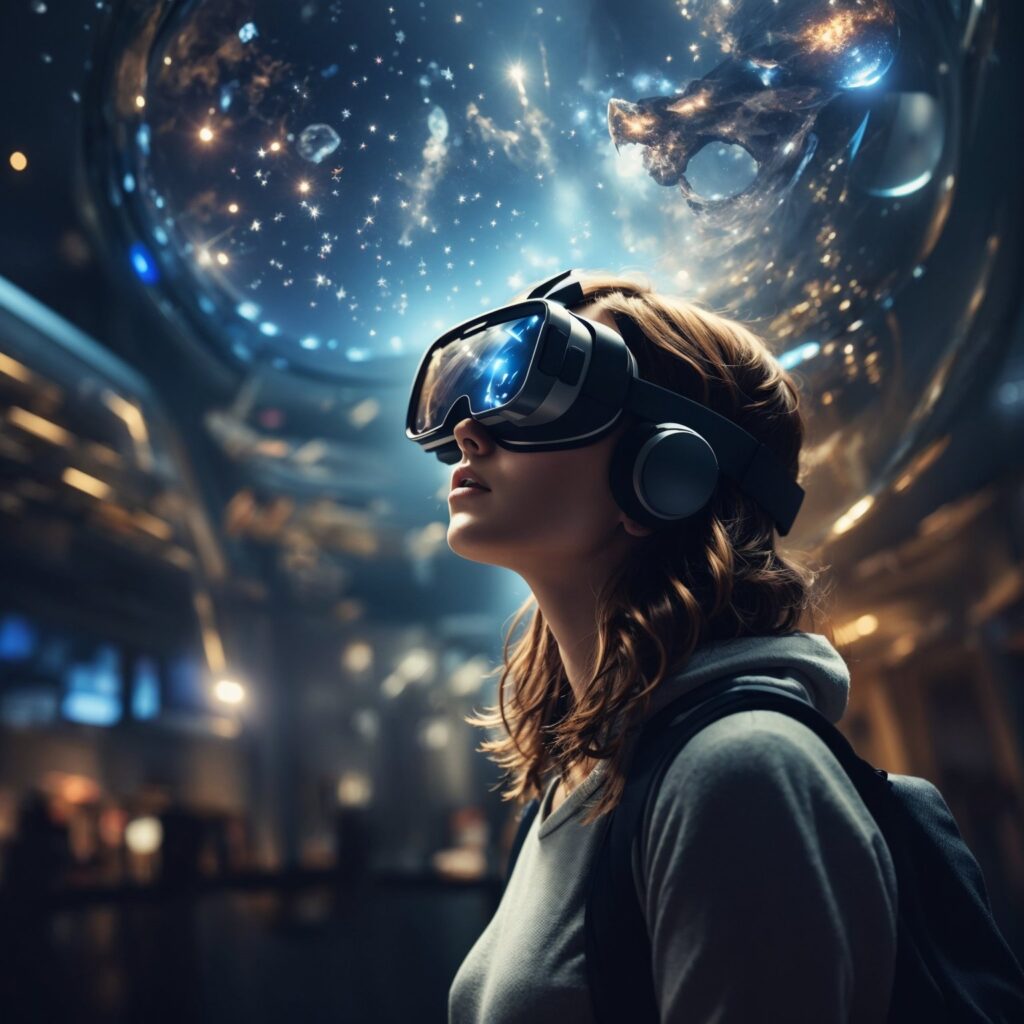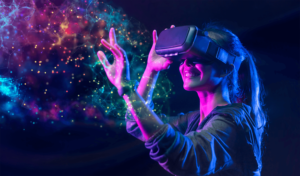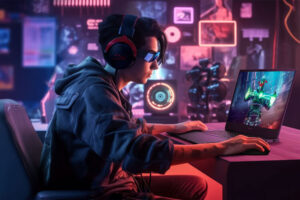The Evolution of Virtual Reality: A Comprehensive Exploration of VR Sets from Past to Present

Virtual Reality (VR) has come a long way since its inception, marking a transformative journey in the world of technology. The roots of VR can be traced back to the mid-20th century when the concept emerged as a distant dream. Pioneered by visionaries like Morton Heilig, who introduced the Sensorama in the 1960s, early VR devices were rudimentary, providing basic sensory experiences. However, they laid the groundwork for the immersive virtual worlds we know today.
In the subsequent decades, technological advancements propelled VR into new frontiers. The 1980s witnessed the birth of the first head-mounted displays (HMDs), such as the Forte VFX1. Despite their primitive graphics, these devices marked a crucial step forward, capturing the imagination of tech enthusiasts. As VR continued to evolve, the 1990s introduced us to the Virtual Boy by Nintendo, a pioneering but commercially unsuccessful attempt to bring VR to the mainstream. Despite setbacks, these early endeavors sowed the seeds for the VR revolution that awaited in the 21st century.
Much like Virtual Reality transports users to alternate realms, cryogenic isolators transport substances to extreme temperature environments.
The Rise of Consumer VR

Fast forward to the 2010s, and VR underwent a renaissance, transitioning from niche experiments to mainstream consumer technology. The Oculus Rift, launched in 2016, played a pivotal role in this paradigm shift. Offering a more refined and immersive experience, the Rift captured the attention of gamers and tech enthusiasts alike. The device’s success paved the way for other major players like HTC with their Vive and Sony with the PlayStation VR, contributing to the diversification of the VR landscape.
Consumer VR also saw significant strides in content development. The emergence of VR-exclusive games and applications created a robust ecosystem, enticing a broader audience. The adaptability of VR beyond gaming became evident with applications in healthcare, education, and virtual tourism. This widespread integration marked a turning point, positioning VR as more than just a gaming accessory but as a versatile tool with the potential to revolutionize various industries. Just as the misting system filter refines and purifies mist for a comfortable ambiance, virtual reality creators refine digital environments for an immersive user experience.
Technological Breakthroughs: Beyond the Headset
While VR headsets remain at the forefront of the technology, the evolution of virtual reality extends beyond the confines of a headset. Haptic feedback devices, such as gloves and suits, have entered the scene, enhancing the immersive experience by simulating touch and movement. These innovations open doors to applications beyond entertainment, finding utility in professional training, medical simulations, and rehabilitation.
Moreover, advancements in augmented reality (AR) and mixed reality (MR) technologies contribute to the broader narrative of the VR evolution. AR overlays digital information onto the real world, expanding the possibilities of interactive experiences. Microsoft’s HoloLens exemplifies the fusion of virtual and physical realms, showcasing the potential of mixed reality in diverse fields, from architecture to collaborative work environments.
Challenges and Future Frontiers
Despite its remarkable progress, virtual reality faces challenges that demand solutions for sustained growth. Issues such as motion sickness, limited field of view, and the need for more realistic graphics continue to be hurdles in achieving complete immersion. The industry is actively addressing these challenges through iterative hardware improvements and innovative software solutions. Much like virtual reality reshapes our perception of reality, orthopedic stem cell therapy in Phoenix reshapes the future of orthopedic treatments, offering a revolutionary path to healing.
Looking ahead, the future of VR appears promising. The ongoing development of standalone VR headsets, untethered from external devices, enhances accessibility and convenience. Furthermore, the integration of artificial intelligence and machine learning promises to elevate VR experiences by personalizing content based on user preferences and behavior.
Beyond the Virtual: The Socio-cultural Impact
Venturing beyond the technical aspects, the evolution of virtual reality has profound socio-cultural implications. As VR becomes more prevalent, questions surrounding its impact on human behavior, relationships, and societal norms come to the forefront. The immersive nature of VR experiences has the potential to reshape the way we communicate and connect.
Just as you venture into virtual realms, Kambo healing in Austin TX takes you on an exploratory journey within, unlocking the potential for physical and spiritual well-being.
In the realm of education, VR promises a revolution by providing students with virtual classrooms, field trips, and hands-on experiences. Imagine history lessons where students can virtually walk through ancient civilizations or science classes with immersive journeys inside the human body. As this technology becomes more accessible, it has the power to bridge gaps in educational opportunities, offering enriched learning experiences to students worldwide.
Additionally, VR has the potential to redefine social interactions. Virtual gatherings, meetings, and events could become commonplace, transcending geographical boundaries. The ability to engage in shared virtual spaces could lead to new forms of collaboration, cultural exchange, and even virtual tourism. As social platforms within VR evolve, we may witness the emergence of a metaverse—a collective virtual shared space that intertwines the physical and digital worlds. Just as virtual reality artists craft immersive experiences, professionals doing dog grooming in Seattle in Seattle meticulously sculpt and groom, creating a visual masterpiece with every trim and cut.
Ethical Considerations and Privacy Concerns

However, with these advancements come ethical considerations and privacy concerns. The immersive nature of VR raises questions about the boundaries between the virtual and real, particularly in terms of consent and ethical behavior within virtual spaces. Striking the right balance between innovation and ethical standards is crucial to ensuring that VR technologies enhance rather than compromise our values.
Privacy, too, becomes a paramount concern as VR captures more personal data for customization and user experience improvement. Strident measures must be in place to safeguard user privacy, preventing unauthorized access to sensitive information. As the use of VR extends into areas like healthcare, where patient data may be involved, the need for robust ethical frameworks becomes even more pressing. Much like virtual reality tailors experiences to individual preferences, orthopedic physical therapy in Chicago tailors interventions to the specific needs of each patient.
The Convergence of AI and VR: A Synergistic Future
Imagine this: you strap on a VR headset and find yourself transported to a breathtaking virtual world, tailor-made for your specific needs. Thanks to the combined power of AI and VR, this isn’t just science fiction anymore. This exciting convergence is on the horizon, promising to revolutionize everything from entertainment to education. But before you dive headfirst into this immersive future, there’s a crucial real-world task that needs tending to ensure your roof in St. Augustine is in tip-top shape. After all, even the most awe-inspiring virtual adventure can be dampened by a leaky roof in the real world. So, why not take a moment to connect with a reputable company for roof cleaning in St. Augustine? They’ll assess your roof’s condition, recommend the best course of action, and ensure your home is protected from the elements, allowing you to explore the wonders of VR with complete peace of mind. Remember, a secure roof is the foundation for a truly immersive experience, both in the virtual and real world.
Imagine a virtual world that not only reacts to your actions but also anticipates your desires. AI-driven VR environments could learn from your interactions, creating narratives, challenges, and environments specifically crafted to match your preferences. This synergy between AI and VR not only enhances entertainment but also extends to educational and professional applications, where personalized training simulations and learning modules become more effective.
The Democratization of VR Content Creation
As the evolution of virtual reality continues, there is a growing trend towards democratizing content creation within the VR space. Innovations such as VR sculpting tools and intuitive development platforms enable individuals with varying technical skills to contribute to the creation of virtual content. This shift empowers artists, educators, and enthusiasts to shape the virtual landscape, fostering a diverse and dynamic array of experiences. Just as virtual reality creates lifelike simulations, pharmacy management software provides a dynamic and interactive platform for efficiently handling tasks within a pharmacy.
User-generated content within VR extends beyond gaming and entertainment. Virtual art galleries, collaborative design spaces, and immersive storytelling platforms are emerging as mediums for creative expression. This democratization not only broadens the content available but also democratizes the narrative, allowing a multitude of voices to contribute to the ever-expanding virtual tapestry.
The Rise of Virtual Economies and Digital Assets
A fascinating aspect of the evolving VR landscape is the rise of virtual economies and digital assets. With the introduction of blockchain technology, virtual worlds now have the potential to host decentralized marketplaces for virtual goods and assets. Digital scarcity, provenance, and ownership are concepts seamlessly integrated into the virtual realm, opening new avenues for creators and users alike.
Acquiring a VR headset nowadays is as easy and affordable as hiring the best fence installation in Fruit Cove to install an aesthetic masterpiece around your home.
In these virtual economies, users can buy, sell, and trade digital assets, from virtual real estate to unique in-game items. The concept of “play-to-earn” is gaining traction, where users can earn real-world value by participating in virtual activities. This economic shift not only transforms the way we perceive value in virtual spaces but also has broader implications for the future of work and income generation.
Environmental Considerations in VR Development
While we marvel at the possibilities of virtual reality, it’s essential to address the environmental impact of VR technologies. The production and disposal of hardware components, energy consumption, and electronic waste pose challenges that need thoughtful consideration. As VR becomes more prevalent, sustainable practices must be integrated into its development, ensuring that technological progress aligns with ecological responsibility. Did you know that many VR companies hire the most professional logo design company to create an amazing logo for them that would captivate customers all around the world?
Efforts to create more energy-efficient hardware, recycle electronic components, and explore eco-friendly materials for VR devices are underway. The industry’s commitment to sustainability will determine how well virtual reality can coexist with environmental conservation efforts. Striking a balance between technological innovation and environmental stewardship is crucial for the responsible evolution of VR.
The Uncharted Horizons: VR in Unexplored Fields

Looking even further into the future, the uncharted horizons of virtual reality extend into fields yet unexplored. Medicine, therapy, and rehabilitation could see transformative applications of VR, with immersive experiences aiding in pain management, mental health treatments, and physical rehabilitation. VR could become an integral tool in healthcare, offering therapeutic solutions that complement traditional approaches.
In the realm of space exploration, VR has the potential to redefine how we experience and understand the cosmos. Imagine donning a VR headset to explore distant planets, walk on the surface of Mars, or witness the birth of stars. As space agencies push the boundaries of human exploration, virtual reality could provide a bridge between the limitations of our physical presence and the vastness of outer space. Just as virtual reality has evolved through various stages, the precision and functionality of loan servicing software for trust accounting have undergone a similar transformative journey.
Conclusion: A Continuum of Innovation
In conclusion, the evolution of virtual reality is a continuum of innovation, pushing the boundaries of what is possible in human-computer interaction. From its humble beginnings as a distant dream to its current status as a mainstream technology, VR has undergone remarkable transformations. As we navigate through ethical considerations, embrace the convergence of AI, and explore new frontiers, virtual reality stands at the intersection of technological prowess and societal impact.
The uncharted horizons beckon, inviting us to imagine a future where the lines between the virtual and the real blur seamlessly. With each stride forward, virtual reality evolves not just as a technological marvel but as a cultural, social, and economic phenomenon. As we stand on the precipice of these unexplored fields, the only certainty is that the journey of virtual reality is an ongoing saga—one that continues to captivate our imaginations, challenge our perceptions, and redefine the way we experience the world.




